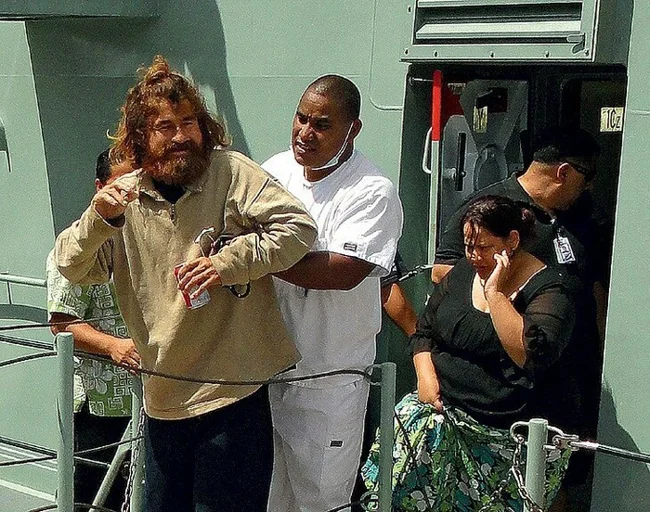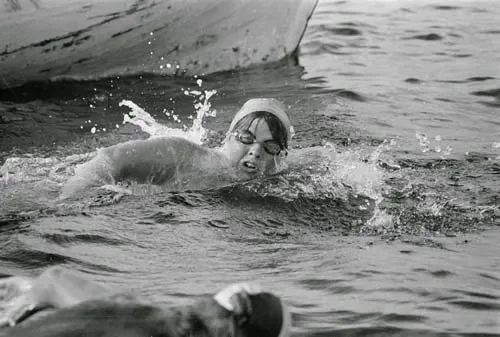How long can a person stay afloat in the open sea? (3 photos)
Being stranded in the open sea without life-saving equipment is a situation that tests the limits of physical endurance, mental fortitude, and natural instincts. How long can a person stay afloat in such extreme conditions? The answer depends on many factors: water temperature, physical fitness, the presence of a life jacket, weather conditions, and even willpower. 
History knows of cases of amazing survival, but also tragedies when the sea turned out to be merciless.
Hypothermia
The biggest threat to humans in the open sea is cold. Sea water temperatures are usually significantly lower than body temperature (36.6 °C), which leads to hypothermia - a dangerous drop in body temperature. In water with a temperature of 15-20 °C, typical for temperate latitudes, a person without special clothing loses heat 25-30 times faster than in the air. At a water temperature of about 10 °C, consciousness can fade in 1-2 hours, and death from hypothermia occurs within 3-6 hours.
In warm tropical seas (25-30 °C), hypothermia is less likely, but even here the body faces other threats: dehydration, sunburn and exhaustion. For example, in warm water, a person can stay afloat longer - up to 12-24 hours or even several days if they know how to conserve energy. However, without fresh water and protection from the sun, survival becomes a matter of time.
Physical endurance and swimming technique
Physical fitness plays a key role. A person who knows how to swim can stay afloat longer than an untrained person. The key is the technique of "passive swimming" - the ability to relax, lie on your back or use minimal movements to conserve energy. Experienced swimmers can stay afloat for several hours using techniques such as swimming on their back or the "float" position, when the body is in a relaxed state and the face remains above the water.
Without a life jacket, things get more complicated. Keeping the body on the surface requires constant effort, which quickly drains strength. On average, a person without special training can swim actively in calm water for no more than 1-2 hours, after which fatigue sets in and muscles begin to cramp. A life jacket significantly increases your chances: with it, a person can stay afloat from several hours to several days if he does not panic and stays warm.
The will to live
The history of survival in the open sea is full of examples when psychological stability turned out to be more important than physical strength. Panic is one of the main enemies in such a situation. It makes a person waste energy on meaningless movements, accelerating exhaustion. On the contrary, calmness and the ability to focus on breathing and saving energy can extend the survival time.
One of the most famous cases is the story of Jose Salvador Alvarenga, a fisherman who in 2012 found himself in the open Pacific Ocean after a storm. He spent 438 days afloat and in a boat, eating fish, birds and collecting rainwater. His survival was made possible by incredible willpower and adaptability. Although Alvarenga had a boat, his case shows that mental toughness can work wonders. 
Jose Salvador Alvarenga
Weather, Currents, and Predators
Weather conditions play a decisive role. In storms or strong waves, even an experienced swimmer may only survive for a few minutes, as fighting the waves takes too much energy. Strong currents can also carry a person far from the crash site, making rescue more difficult. At the same time, a warm current, such as the Gulf Stream, can slightly extend survival time by maintaining body temperature. Another threat is marine predators.
Shark attacks in the open sea are rare, but not impossible, especially if a person is injured or has been in the water for a long time. Survival stories, such as the case of the crew of the cruiser Indianapolis in 1945, show that sharks can be a serious danger: of the 900 people who found themselves in the water after the ship was torpedoed, only 316 survived, and many died because of attacks.
Limits of the human body
A person can survive without food for several weeks, but without fresh water - only 3-7 days, depending on the conditions. In the open sea, access to drinking water is limited, unless it rains. Dehydration becomes a critical factor as early as the second or third day. Sunburn and salt water, which irritates the skin, also worsen the condition.
On average, without a life jacket and in cold water (10–15 °C), a person can survive from 1 to 6 hours. In warm water (25 °C and above) with good physical fitness and the right technique - up to 12–24 hours. With a life jacket and in favorable conditions, survival time increases to several days, but without water and food, the chances drop sharply after 3–4 days. 

























